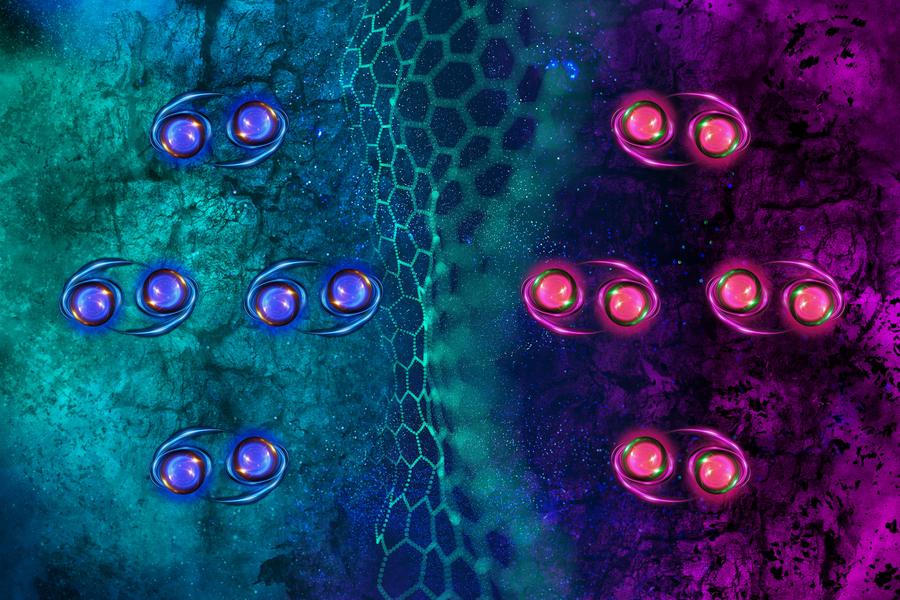2025-05-22 ミシガン大学
![]() Test tubes containing the new silicone copolymers, separated by chain length, from long to short provide visual evidence of the varying band gap in the new semiconductor silicone. Shining a UV light creates a rainbow of beakers as the longer chain lengths shift towards the red end of the electromagnetic spectrum, requiring less energy to absorb and emit light at lower energies. Image credit: Zijing (Jackie) Zhang.
Test tubes containing the new silicone copolymers, separated by chain length, from long to short provide visual evidence of the varying band gap in the new semiconductor silicone. Shining a UV light creates a rainbow of beakers as the longer chain lengths shift towards the red end of the electromagnetic spectrum, requiring less energy to absorb and emit light at lower energies. Image credit: Zijing (Jackie) Zhang.
<関連情報>
- https://news.umich.edu/a-rule-breaking-colorful-silicone-that-could-conduct-electricity/
- https://onlinelibrary.wiley.com/doi/10.1002/marc.202500081
Si─O─Si結合におけるσ-σ*共役反応 σ–σ* conjugation Across Si─O─Si Bonds
Zijing Zhang, Cecilia Pilon, Hana Kaehr, Pimjai Pimbaotham, Siriporn Jungsuttiwong, Richard M. Laine
Macromolecular Rapid Communications Published: 12 March 2025
DOI:https://doi.org/10.1002/marc.202500081
Abstract
Polysiloxanes and silsesquioxanes (SQs) are known to be insulating materials. We describe here polysiloxane copolymers where this is not the case. Thus,Me2VinylSi─O─SiMe2Vinyl/Br-Ar-Br copolymers exhibit conjugation via Si─O─Si bonds contrary to the widespread understanding that such linkages must be insulating. Here we describe the synthesis, characterization, and photophysical properties of [-VinylSiMe2OMe2SiVinyl-Ar]x copolymers; Ar = phenyl, terphenyl, stilbene, thiophene, etc. Con-jugation is evidenced by redshifted emission λmax of copolymers vs model compounds, [(MeO)2SiMeVinyl-Ar-VinylMeSi(OMe)2], electron transfer to F4TCNQ and MW (DP) depend-ent emission red-shifts (smaller bandgaps with increasing DP). Theoretical calculations targeting electronic structure, absorbance/emission λmax of model com-pounds vs oligomers support conjugation via π-dπ* orbital interactions. In the ground state, model compounds offer Si─O─Si bond angles of ≈110° on average. In the copolymers, bond angles change in the ground state averaging ≈ 140 ° and in the excited state approach 150 ° much closer to planarity, a result of conjugation. Here SiOSi bonds facilitate intersystem charge transfer (ICT) as seen in carbon based polymers. Thus, i.e, ICT in VySiOSiVycoPh likely leads to a much larger Stokes shift (≈115 nm) than in the silane model. Our findings provide the first detailed photophys-ical studies of conjugation in polysiloxane-chromophore copolymers.




